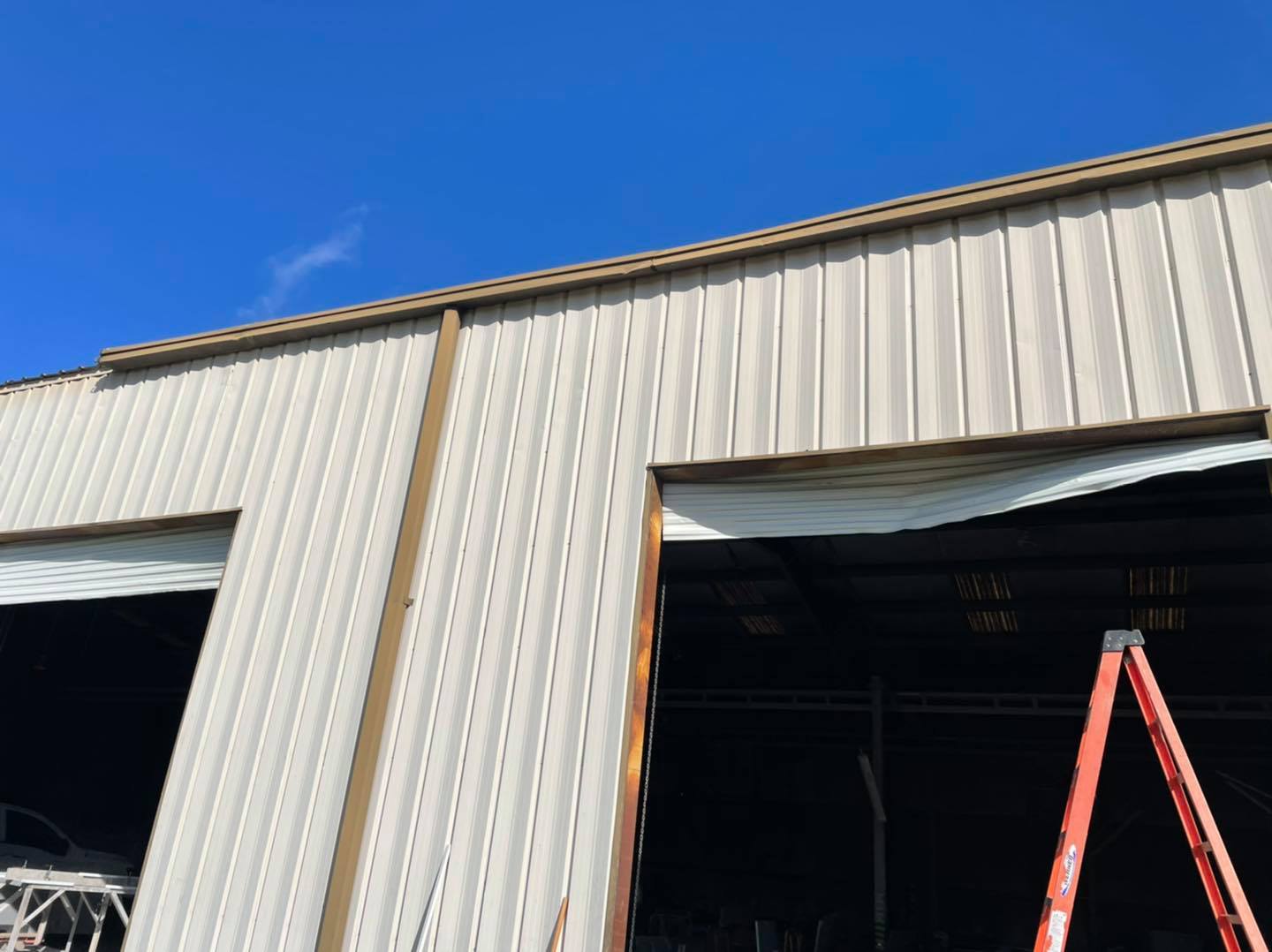Menu
open menu
close menu
- Products
- Self-Storage
- Commercial/Industrial
- Nokē™ Smart Entry
- Resources
- Events
- Investors
- About Us

High speed wind events can be frightening, especially if you own a building where the disaster strikes. After all, unexpected wind events can cause significant damage to your building, from broken windows and overhead doors to the complete destruction of it's entire structure - making it imperative to thoroughly inspect your building for damage after a high speed wind event occurs.
When visually and operationally inspecting your overhead doors, do not remove, adjust or repair the door, it's springs or other door system components. Overhead doors are large and heavy objects that operate under extreme spring tension, making them very dangerous for anyone besides a trained door systems technician to remove, repair or adjust.
Damage from Hurricane Laura - August 2020:
Repaired with 12' wide x 14' high wind rated roll-up doors installed by VES Specialists
VISUAL INSPECTION
The first thing to do after a high speed wind event is to visually inspect your building and doors for any obvious wind damage. If damage is detected during the inspection at any time, immediately stop the inspection and call a trained door systems technician to assess and repair any damage.
Things to look for during visual inspection:
Door Frame Condition:
Inspect the jams and header around your roll-up door for proper attachment to the structure, including any loose or improperly attached connections. If you detect any damage to your door's frame, contact your building contractor or design professional to assess and repair this damage.
Dents, Dings or Visible Damage:
Believe it or not, visible damage such as dents or dings can often be much more than a cosmetic issue. When you see visible damage to your door after a high speed wind event, it could be causing your door to misalign and not operate as intended. When operation is difficult, it increases the wear and tear on your door each cycle, and can lead to higher expenses down the road. If you see dents, dings or visible damage, make sure you contact a trained door systems technician to assess and repair this damage.
Door Alignment:
Check for misalignment of your roll-up door and door components. Is the door uneven or sagging? When alignment is off, there's a bigger problem underneath aesthetics and it should be fixed immediately. Uneven or sagging curtains could mean your door's springs are our of alignment. When a door's springs aren't properly balanced, they can wear out unevenly and result in significant damage and large expenses. Again, springs under extreme tension are dangerous and you should immediately contact your trained door systems technician to assess and repair this damage.
For a complete guide on visually inspecting your overhead door for damage, view DASMA's Technical Data Sheet #174. CLICK HERE>>>
OPERATIONAL INSPECTION
If you've completed your visual inspection without any signs of damage, then it's time to proceed with an operational inspection. When inspecting your overhead doors, it's important to look for more than cosmetic issues since not all damage is easily seen.
If any problem is detected during the operational inspection, the overhead door should be immediately and carefully lowered to the closed position and a trained door systems technician should be contacted to correct the problem.
Things to look for during operational inspection:
Noises:
If you try to open and close your roll-up door, is it making much more noise than normal? If so, there could be damage to the door itself or to it's motor. Contact a trained door systems technician to assess this noise.
Difficulty Operating in the Manual Position:
If you're having a hard time manually opening and closing your roll-up door, there's a chance it's springs could've been damaged during the high speed wind event. Call a trained door systems technician to safely repair your overhead door and return it to proper spring tension.
For a complete guide on operationally inspecting your overhead door for damage, view DASMA's Technical Data Sheet #174. CLICK HERE>>>
WHAT TO DO NEXT...
If any damage is detected during a visual or operational inspection, you should immediately cease your inspection and call a professional to quickly assess and repair this damage.
The best way to protect yourself and your building from future wind damage is with wind rated doors that are strategically designed to withstand high-speed wind events. When your doors meet specified wind load required by even the most stringent building codes, you're sure to stay protected! Click the image or link below to learn more about wind rated commercial steel doors!
These Stories on Commercial Rolling Steel & Sheet Doors
(866) 562-2580
(770) 562-2850
REQUEST A QUOTE